Creating the perfect potting mix is essential for healthy plant growth, as it provides the necessary nutrients, moisture, and aeration for thriving plants. The ideal potting mix, often referred to as the growing medium, consists of a balanced blend of soil, organic matter, drainage and aeration elements, and essential nutrients tailored to the specific needs of your plants.
According to a study published in the Journal of Plant Nutrition, using the right combination of materials in a potting mix can significantly improve plant growth and yield.
In this comprehensive guide, we will delve into the essential ingredients for a healthy potting mix, discuss how to customize it for various plant types, and explore how to avoid common mistakes when creating the perfect mix. With the help of scientific data, practical examples, and expert tips, you’ll be able to craft a potting mix that supports optimal plant health and maximizes growth potential.
What Are the Key Components of a Healthy Potting Mix?
A well-balanced potting mix should include a combination of soil, organic matter, drainage and aeration elements, and appropriate nutrients. Each of these components plays a crucial role in ensuring your plants have the ideal environment to grow and flourish.
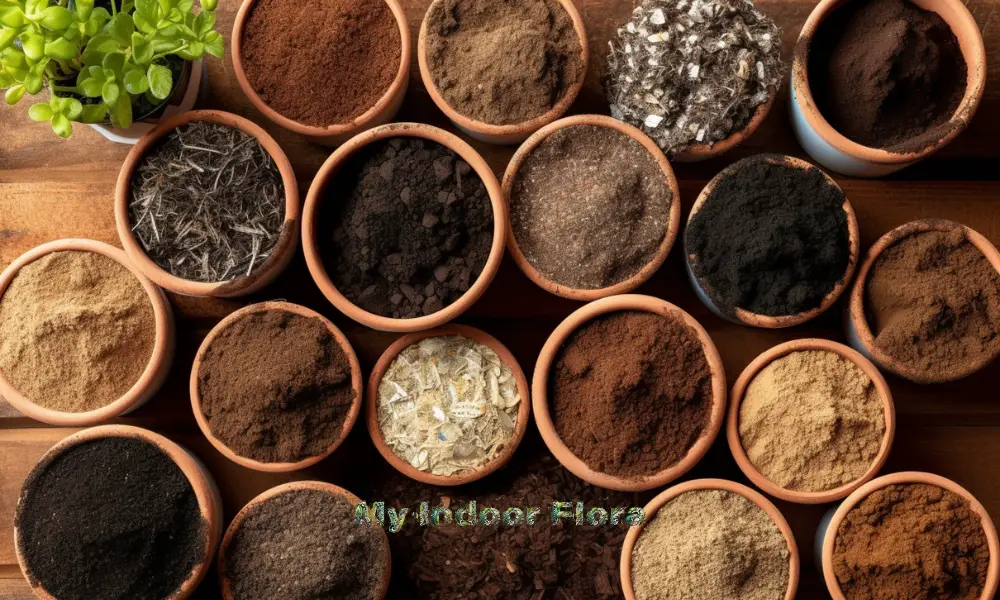
The Role of Soil in Potting Mixes
Soil acts as the base for your potting mix, providing the primary structure and anchorage for plant roots. It also serves as a reservoir for water and nutrients that plants need to grow. The right soil type can greatly impact the health of your plants, so it’s important to choose wisely.
Importance of Organic Matter
Organic matter, such as compost, aged manure, and leaf mold, contributes to the overall fertility and structure of the potting mix. It helps improve soil texture, water retention, and nutrient availability for your plants.
Drainage and Aeration Elements
Drainage and aeration elements are crucial for preventing root rot and ensuring the proper oxygen levels for your plants. Materials such as perlite, vermiculite, and pumice help create air pockets in the potting mix, facilitating optimal root growth and function.
Fertility and Nutrient Availability
A healthy potting mix should have the right balance of macronutrients (nitrogen, phosphorus, and potassium) and micronutrients (such as calcium, magnesium, and iron) to support plant growth. Organic and synthetic fertilizers can be used to achieve the desired nutrient levels for your plants.
Now that we’ve covered the main components of a healthy potting mix, let’s dive deeper into each element and how to customize them for your specific needs.
How Can You Determine the Right Soil for Your Potting Mix?
The type of soil you choose for your potting mix will greatly impact your plants’ health and growth. It’s essential to understand the different soil types, their properties, and how they affect plant growth.
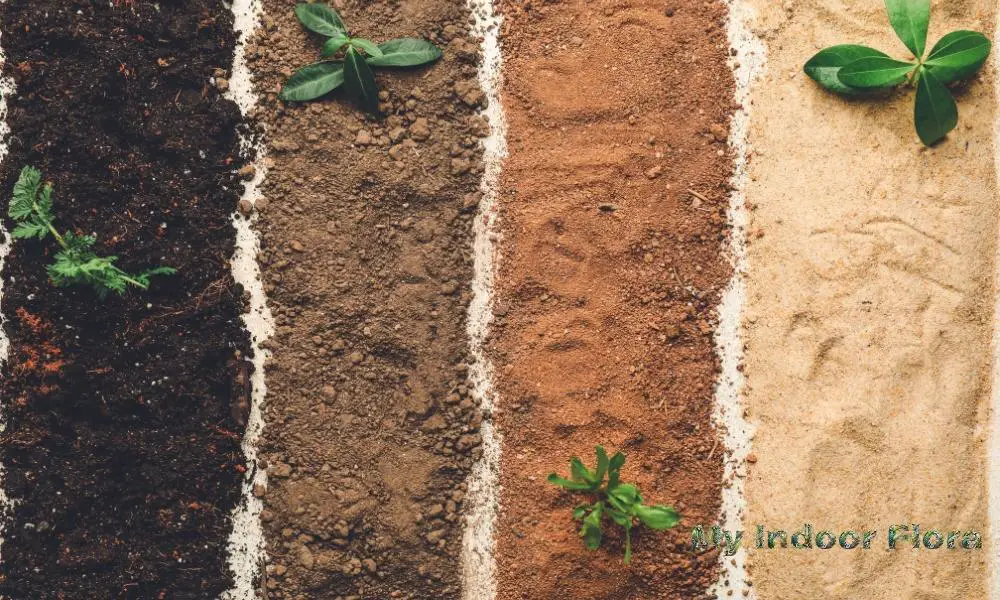
Identifying Soil Types
There are three primary soil types, each with its unique characteristics:
- Sandy Soil – This soil type is characterized by large particle sizes and low nutrient content. Sandy soils provide excellent drainage but have poor water retention, making them ideal for drought-tolerant plants.
- Loamy Soil – Loamy soils are a balanced mix of sand, silt, and clay particles. They offer good water retention, drainage, and nutrient availability, making them suitable for a wide range of plants.
- Clay Soil – Clay soils consist of small, tightly packed particles, making them dense and heavy. They have high water retention but poor drainage, which can lead to root rot in some plants.
The Impact of Soil pH on Plant Health
Soil pH plays a critical role in determining the availability of nutrients to plants. Most plants prefer a slightly acidic to neutral soil pH (6.0-7.0), while some, like blueberries and azaleas, thrive in more acidic conditions. It’s important to test your soil pH and adjust it as needed to create the ideal environment for your plants.
Customizing Soil for Specific Plant Requirements
Different plants have varying soil preferences, so it’s essential to adjust your potting mix to suit their specific needs. For example, succulents and cacti require well-draining soil, while acid-loving plants like blueberries need a more acidic soil mix. By understanding the unique requirements of your plants, you can create a tailored potting mix that promotes optimal growth and health.
What Organic Materials Can You Add to Improve Your Potting Mix?
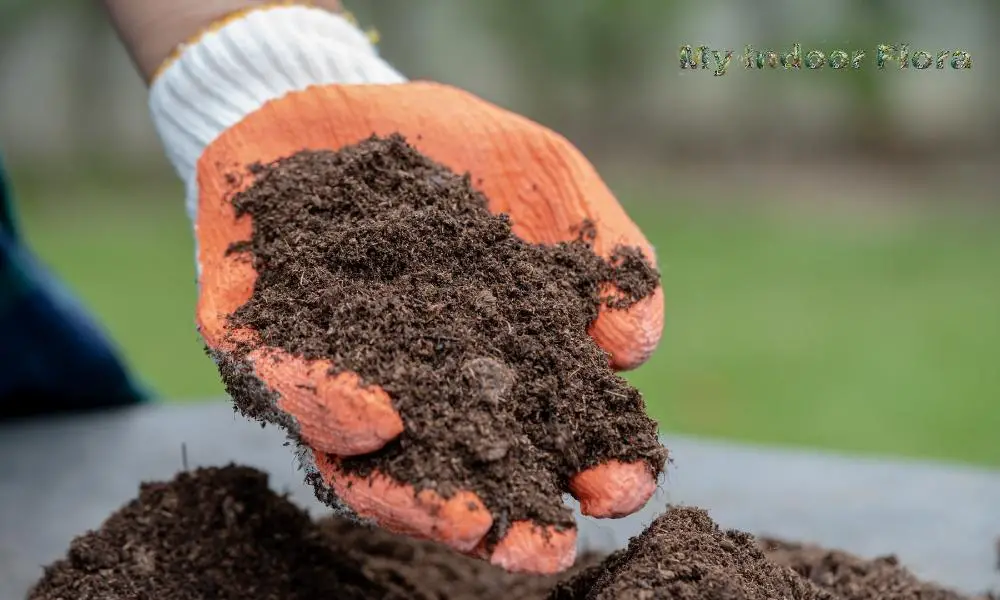
Incorporating organic matter into your potting mix can improve its fertility, structure, and water retention. Here are some commonly used organic materials and their benefits.
Benefits of Compost in Potting Mix
Compost is decomposed organic matter, rich in nutrients and beneficial microorganisms. It improves soil structure, enhances water retention, and provides a slow-release source of essential nutrients for plants. A study published in the Journal of Environmental Quality found that adding compost to the soil can increase plant growth by up to 45%.
Incorporating Aged Manure
Aged manure, especially from herbivorous animals like cows and horses, is an excellent source of organic matter and nutrients. It helps improve soil texture, promotes beneficial microorganisms, and provides nitrogen, phosphorus, and potassium to your plants.
Using Peat Moss or Coconut Coir for Water Retention
Both peat moss and coconut coir can be used to improve the water-holding capacity of your potting mix. They are highly absorbent materials that help maintain consistent moisture levels in the soil. Coconut coir is a more sustainable alternative to peat moss, as it’s a byproduct of the coconut industry.
The Role of Leaf Mold and Vermicompost
Leaf mold, made from decomposed leaves, and vermicompost, produced by earthworms breaking down organic matter, are valuable additions to your potting mix. They improve soil structure, increase water retention, and provide a slow-release source of nutrients for your plants.
What Materials Ensure Proper Drainage and Aeration in Your Potting Mix?
Good drainage and aeration are crucial for healthy root growth and preventing root rot. Here are some materials you can use to improve these aspects of your potting mix.
The Importance of Perlite and Vermiculite
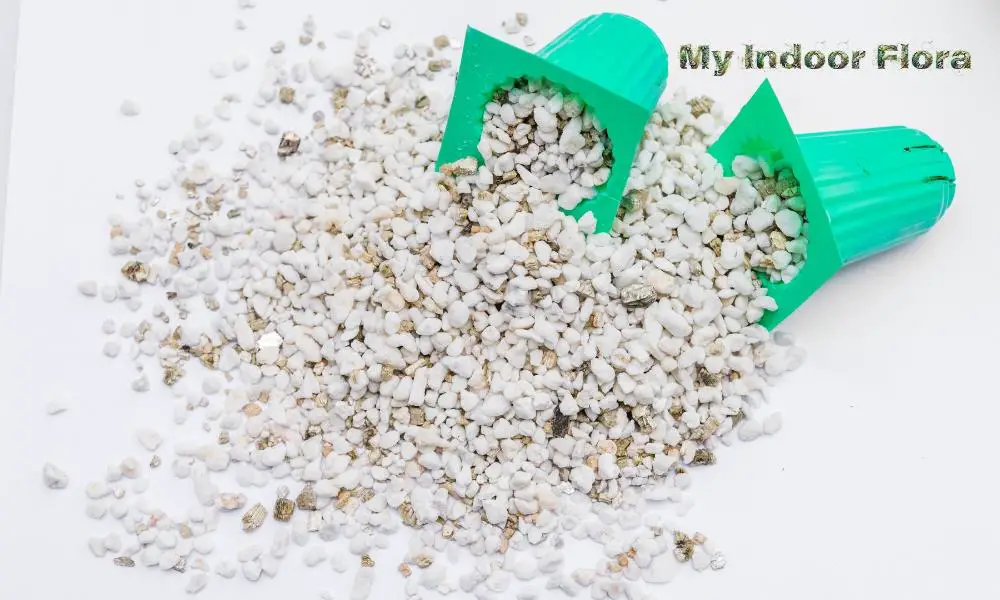
Perlite and vermiculite are lightweight, porous materials that help improve drainage and aeration in your potting mix. They create air pockets within the soil, allowing oxygen to reach plant roots and excess water to drain away. A study in the Journal of Plant Nutrition found that adding perlite to the soil can increase plant growth by up to 25%.
Advantages of Using Sand
Coarse sand can be added to your potting mix to enhance drainage and prevent soil compaction. It’s particularly beneficial for plants that require well-draining soil, such as succulents and cacti.
Incorporating Pumice or Lava Rock
Pumice and lava rock are both lightweight, porous materials that can improve drainage and aeration in your potting mix. They also have the added benefit of adding trace minerals to the soil.
Utilizing Wood Chips or Bark
Adding wood chips or bark to your potting mix can help increase aeration and create a more open soil structure. These materials also break down slowly, providing a long-lasting source of organic matter for your plants.
How Can You Optimize Nutrient Availability in Your Potting Mix?
Ensuring your potting mix has the right balance of nutrients is vital for plant growth and development. Here’s how you can optimize nutrient availability in your potting mix.
Assessing Macronutrient Needs: Nitrogen, Phosphorus, and Potassium
Macronutrients are essential for plant growth and development, and each plays a crucial role in different aspects of plant health:
- Nitrogen (N) – Nitrogen is responsible for leafy growth and chlorophyll production, which supports photosynthesis. It is commonly found in organic matter, such as compost and aged manure.
- Phosphorus (P) – Phosphorus aids in root development, flower formation, and seed production. Bone meal and rock phosphate are popular organic sources of phosphorus.
- Potassium (K) – Potassium helps regulate water and nutrient movement within plants, as well as supporting overall plant health and disease resistance. It can be found in sources like greensand and potassium sulfate.
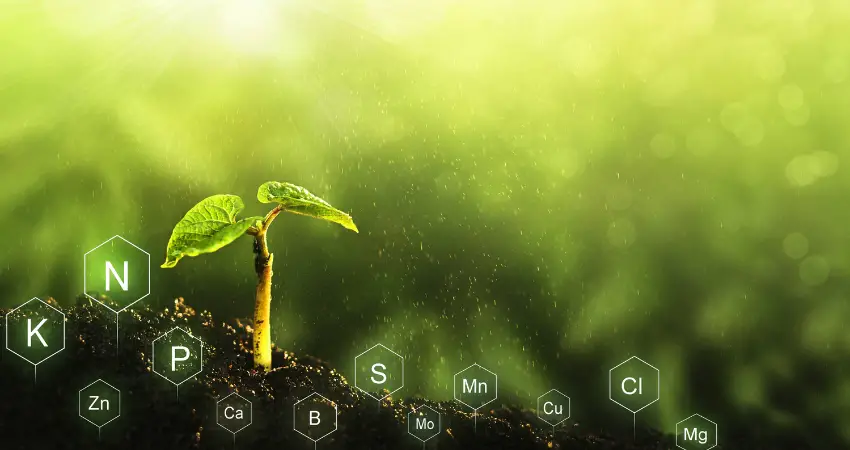
Importance of Micronutrients for Plant Health
Micronutrients, although required in smaller quantities, are equally important for plant growth. These include elements like calcium, magnesium, and iron. Incorporating organic matter, such as compost and aged manure, can help provide a balanced supply of micronutrients to your plants.
Utilizing Organic Fertilizers and Amendments
Organic fertilizers and amendments, like blood meal, bone meal, and fish emulsion, provide a slow-release source of nutrients for your plants. They can be added to your potting mix to improve fertility and ensure a consistent supply of essential nutrients.
Considering the Use of Synthetic Fertilizers
In some cases, synthetic fertilizers can be used to supplement your potting mix with specific nutrients your plants may require. However, it’s important to use them sparingly and follow the recommended application rates, as overuse can lead to nutrient imbalances and potential harm to your plants.
How Can You Create a Custom Potting Mix for Different Plant Types?
Different plants have unique requirements, and creating a customized potting mix can help them thrive. Here are some guidelines for formulating potting mixes for specific plant types:
Formulating Potting Mixes for Succulents and Cacti
Succulents and cacti need a well-draining potting mix to prevent root rot. A suitable mix can be created by combining:
- 2 parts coarse sand or perlite
- 1 part peat moss or coconut coir
- 1 part regular potting soil
Preparing Potting Mix for Vegetables and Herbs
Vegetables and herbs require a nutrient-rich potting mix to support healthy growth. A good mix can be achieved by combining:
- 3 parts compost or aged manure
- 1 part perlite or vermiculite
- 1 part peat moss or coconut coir
- 1 part loamy soil
Designing a Mix for Orchids and Epiphytes
Orchids and epiphytes need a loose, well-draining, and airy potting mix to mimic their natural growing conditions. A suitable mix can be created by combining:
- 2 parts bark chips or coconut husk
- 1 part perlite or pumice
- 1 part peat moss or coconut coir
Creating a Potting Mix for Acid-Loving Plants
Acid-loving plants, like blueberries and azaleas, require a more acidic potting mix. A suitable mix can be achieved by combining:
- 2 parts peat moss or coconut coir
- 1 part perlite or vermiculite
- 1 part compost or aged manure
- 1 part sandy soil
Additionally, adding sulfur or acidic organic matter, such as pine needles, can help lower the soil pH to create a more acidic environment for these plants.
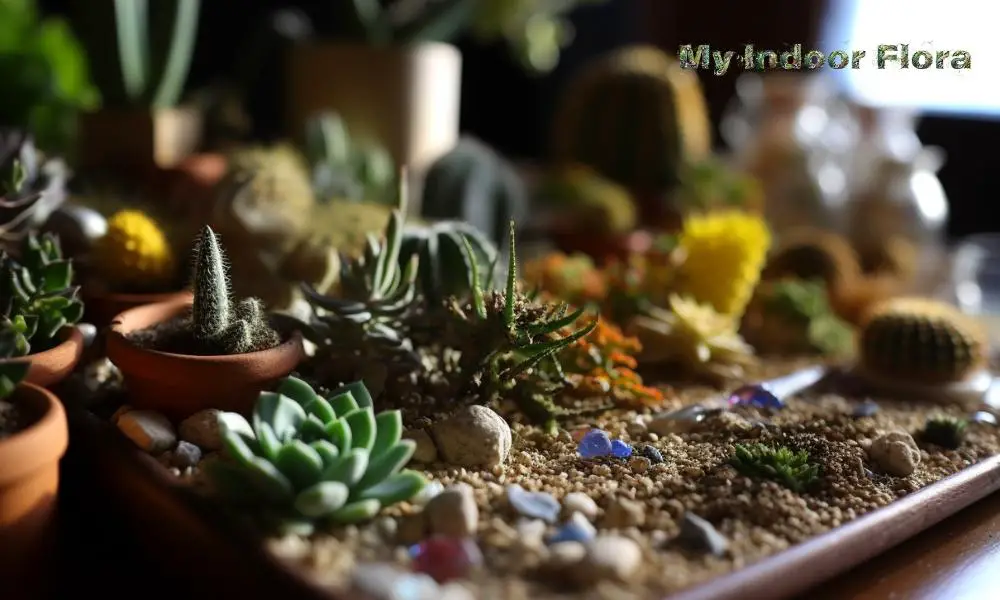
What Common Mistakes Should You Avoid When Creating a Potting Mix?
When creating a potting mix, it’s crucial to avoid common mistakes that could negatively impact plant growth and health. Here are some pitfalls to watch out for:
Over-Compacting the Soil
Compacted soil can restrict air and water movement, leading to poor root development and increased risk of root rot. Ensure your potting mix has a light and fluffy texture by incorporating drainage and aeration materials like perlite, vermiculite, and bark chips.
Neglecting pH Adjustments
As mentioned earlier, soil pH plays a critical role in nutrient availability. Neglecting to test and adjust the pH of your potting mix could result in nutrient deficiencies and reduced plant growth. Use a soil pH test kit to monitor and amend the pH as needed.
Over-Fertilizing Your Potting Mix
While it’s essential to provide your plants with the necessary nutrients, over-fertilizing can lead to nutrient imbalances and harm your plants. Use organic fertilizers and amendments judiciously and follow the recommended application rates for synthetic fertilizers.
Using Unsterilized Soil or Organic Matter
Unsterilized soil and organic matter can introduce pests, diseases, and weed seeds into your potting mix. It’s essential to use sterilized materials or properly composted organic matter to prevent these issues.
Conclusion: Crafting the Perfect Potting Mix for Your Plants
Creating the perfect potting mix for your plants is a delicate balance of soil, organic matter, drainage and aeration elements, and nutrients. By understanding the unique requirements of your plants and following the guidelines outlined in this article, you can customize a potting mix that promotes optimal plant health and growth. Remember to avoid common mistakes and make necessary adjustments to your mix as your plants grow and their needs change. With the right potting mix, you can set the stage for a thriving garden filled with healthy, flourishing plants.
